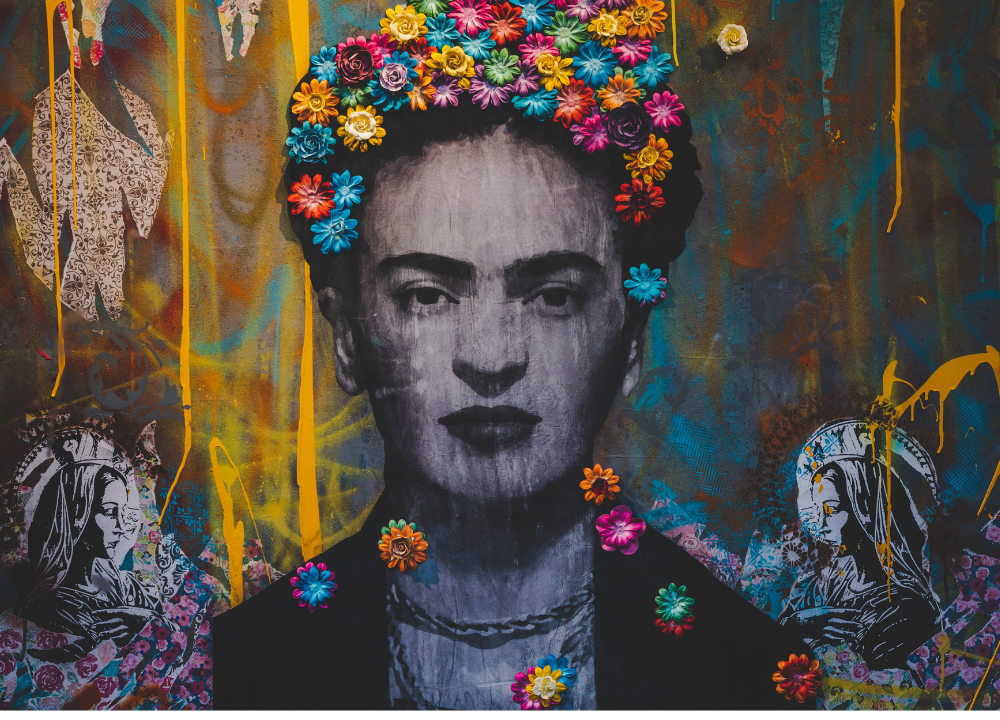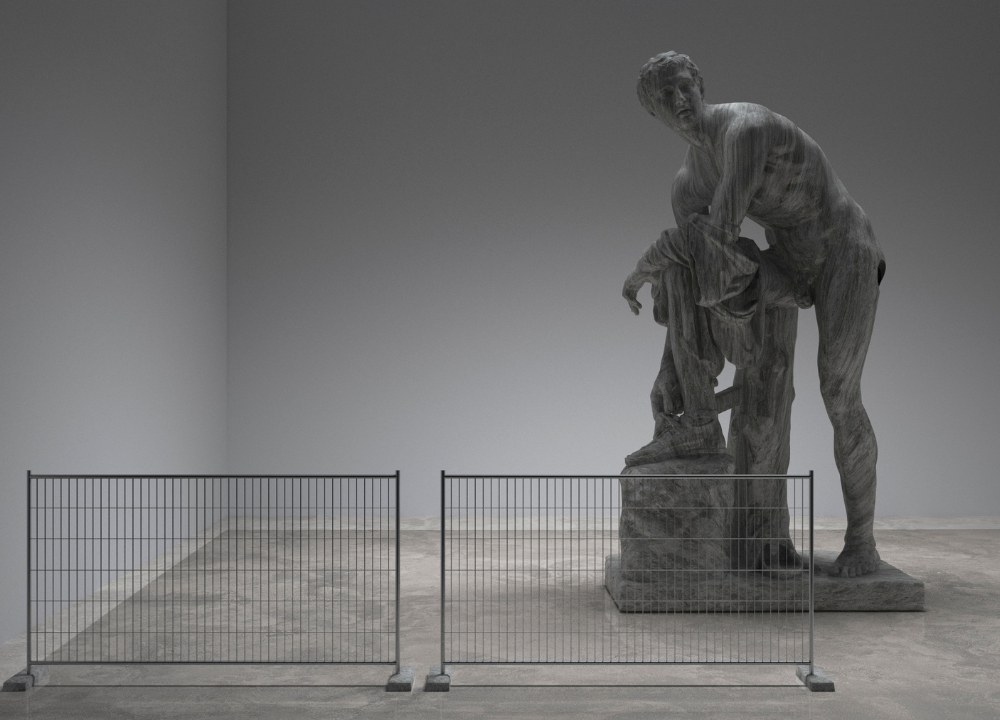Frida Kahlo’s artistic revolution expanded beyond self-portraits into bold explorations of personal and political themes. Her distinctive style and powerful symbolism continue to captivate audiences worldwide.
Frida Kahlo’s impact on the art world goes beyond her iconic self-portraits, as her work delved into complex themes of identity, pain, and society. Through her use of vibrant colors, surreal imagery, and intimate details, she expressed her personal struggles and challenged societal norms.
Beyond her own experiences, Kahlo’s art also addressed political issues and celebrated Mexican culture. By breaking boundaries and sharing her raw emotion, Kahlo’s artistic revolution continues to inspire and resonate with audiences around the globe.
Early Life And Influences
Frida Kahlo, one of the most influential artists of the 20th century, revolutionized the art world with her unique self-portraits that depicted her pain, strength, and Mexican identity. The early life and influences of Frida Kahlo shaped her artistic style and gave her the inspiration to challenge traditional norms. In this blog post, we will explore her Mexican heritage and culture and the impact of her childhood illness.
Mexican Heritage And Culture
Kahlo’s deep connection to her Mexican heritage and culture played a vital role in shaping her artistic expression. Born and raised in Mexico City in 1907, she was exposed to the vibrant colors, rich traditions, and complex history of her homeland. The bold and vivid colors found in traditional Mexican art, as well as the symbolism and spiritual beliefs, greatly influenced Kahlo’s work. Her Mexican heritage served as a constant source of inspiration, allowing her to create art that celebrated her roots and confronted social and political issues.
Childhood Illness And Its Impact
Kahlo’s life took a traumatic turn when she was just six years old. She contracted polio, a disease that left her right leg weakened and caused a noticeable limp. This childhood illness not only had a physical impact on her body, but it also shaped her psychological and emotional state.
The isolation she experienced during her recovery led her to turn to art as an outlet for her pain and loneliness. It was during this time that she began painting, using a mirror as a way to create self-portraits and explore her own identity. This early introduction to self-expression and reflection laid the foundation for her later works that would make her an iconic figure in the art world.
Discovering Art And Identity
Explore the captivating artistic revolution of Frida Kahlo, delving beyond the realm of self-portraits. Uncover the intertwining of art and identity through Kahlo’s innovative and iconic works that transcend boundaries and inspire profound introspection.
Art Education And Early Works
During her teenage years, Frida Kahlo’s passion for art began to develop, leading her to enroll at the prestigious National Preparatory School in Mexico City. Despite her hopes of becoming a doctor, fate had a different path in store for her.
At the National Preparatory School, Frida took drawing and painting classes, honing her skills under the guidance of renowned Mexican muralist, Fernando Fernandez. These early experiences not only shaped her artistic abilities but also served as a foundation for the themes she would later explore.
At a young age, Frida faced immense physical and emotional challenges. She suffered a life-altering accident that left her bedridden for months. This period of isolation became a turning point, as Frida picked up her paintbrush and started creating self-portraits that expressed her pain, identity, and resilience.
Through her early works, Frida explored themes of gender, indigenous Mexican culture, and political activism. Her paintings evoked a sense of raw emotion and showcased her unique perspective as a woman of color in a male-dominated art world.

Marriage To Diego Rivera
Frida’s life took a momentous turn when she met the renowned Mexican painter, Diego Rivera, who would become her husband and artistic collaborator. Their tumultuous relationship became a catalyst for Frida’s exploration of art and identity.
In her marriage to Diego, Frida found not only love but also a source of inspiration. She was deeply influenced by Diego’s larger-than-life murals and his commitment to political activism through art. Together, they embarked on artistic journeys, traveling across Mexico and the United States, where they painted murals that celebrated Mexican culture and addressed social issues.
While supporting Diego’s artistic endeavors and wrestling with her own personal challenges, Frida continued to create her own distinct body of work. Her paintings became a reflection of her emotions, her experiences, and her inner struggles. Through her unique artistic style, which combined traditional Mexican symbolism with elements of surrealism, Frida forged a powerful artistic revolution.
Ultimately, Frida Kahlo’s art and identity are inseparable. Her paintings transcended self-portraiture, delving into the complexities of the human condition and challenging societal norms. Through her works, she not only impacted the art world but also left a lasting legacy that continues to inspire artists, feminists, and individuals around the world to embrace their own identities and tell their unique stories.
Themes And Symbolism In Kahlo’s Art
Frida Kahlo’s art goes beyond self-portraits, delving into themes and symbolism. Her artistic revolution is evident through her unique portrayal of pain, identity, and Mexican culture. Her work captivates with its rich symbolism and showcases her distinctive perspective on life and art.
Exploration Of Self And Femininity
Frida Kahlo’s art transcends the boundaries of traditional self-portraits, delving into profound explorations of self and femininity. Boldly expressing her personal experiences and emotions, Kahlo’s art provides a raw and unapologetic glimpse into her inner world.
- Frida Kahlo’s art delves into profound explorations of self and femininity.
- Kahlo fearlessly expresses her personal experiences and emotions through her art.
- Her self-portraits provide a raw and unapologetic glimpse into her inner world.
Iconography And Surrealism
Kahlo’s art is rich in iconography and infused with elements of surrealism. Through symbolism and intricate details, she weaves complex narratives that challenge societal norms and conventions.
- Kahlo’s art is characterized by rich iconography and surrealistic elements.
- Symbolism and intricate details are used to create complex narratives in her artwork.
- Her art challenges societal norms and conventions through its unique style.
Impact On Contemporary Art And Culture
Frida Kahlo’s impact on contemporary art and culture is profound, with her work transcending the boundaries of self-portraiture to revolutionize artistic expression. Her influence extends to various aspects of modern society, including feminist and LGBTQ+ representation and a lasting legacy that continues to shape the art world.
Feminist And Lgbtq+ Representation
Kahlo’s art challenges traditional gender roles and societal expectations, portraying themes of female empowerment and the celebration of non-conforming identities. Her unapologetic depiction of the female form and exploration of gender fluidity serves as a source of inspiration for contemporary artists seeking to dismantle conventional norms and promote inclusivity.
Legacy And Continued Influence
Kahlo’s art has left an indelible mark on the art world, with her iconic imagery and unapologetic voice resonating with today’s artists. Her fearless approach to self-expression and open embrace of pain and vulnerability continue to inspire a new generation of creators to explore their own identities and portray their truths authentically.
Recognition And Influence Today
Frida Kahlo’s artistic revolution goes beyond the self-portrait, redefining recognition and influence in today’s art world. Her unique style and powerful storytelling captivate audiences, making her a timeless icon of self-expression and inspiration.
Recognition and Influence Today Frida Kahlo’s enduring legacy and global popularity are evident in the widespread recognition and influence of her work in today’s art world. From museum exhibitions to popular culture, Kahlo’s impact continues to resonate and inspire. Let’s delve into how her art has transcended time and borders. Global Popularity and Museum Exhibitions Kahlo’s art enjoys global popularity, with museum exhibitions showcasing her iconic pieces around the world.
Her unique blend of surrealism and personal expression has captivated audiences in diverse cultural settings. From Mexico City to New York City, her art continues to draw crowds and spark conversation. Kahlo’s Enduring Legacy The enduring legacy of Frida Kahlo is evident in the myriad ways her art continues to influence contemporary artists and pop culture. Her unapologetic embrace of personal struggles and Mexican identity serves as a timeless source of inspiration for creators across different mediums. “`html
Global Popularity And Museum Exhibitions
- Her art enjoys global popularity
- Exhibitions showcase her iconic pieces
- Her unique blend captivates diverse audiences
Kahlo’s Enduring Legacy
- Her legacy influences contemporary artists
- Her embrace of personal struggles inspires
- She remains a timeless source of inspiration
Conclusion
Frida Kahlo’s artistic revolution transcended mere self-portraiture, unleashing a powerful and unfiltered expression of her innermost struggles and emotions. Her vivid and honest depictions provide a profound connection to viewers, inviting us to delve into our own personal narratives. Kahlo’s influence extends far beyond her own time, leaving an indelible mark on the art world.
Her legacy continues to inspire and challenge artists to embrace authenticity and embrace their unique voices, igniting societal change through their creations.


